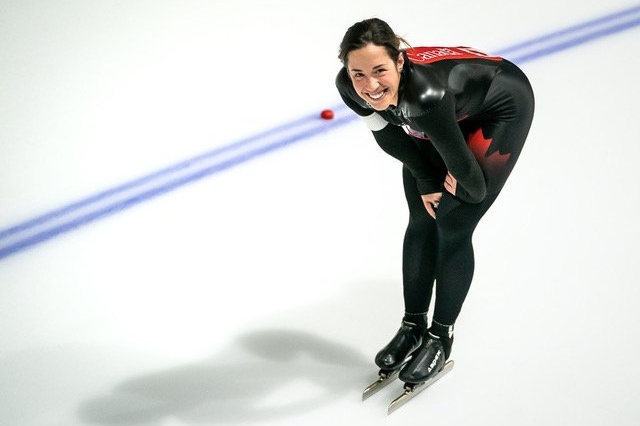Valérie Maltais took her first steps on the skates on the international scene in short track speed skating, participating in three Olympic Games in this discipline and winning a silver medal in the relay in Sochi in 2014. Four years later, the Quebecer moved on to long track and quickly managed to find her place, thanks in particular to the team pursuit.
Individually, success did not come instantly to Maltais. However, her experience in short track where she was surrounded by other skaters served her well in team pursuit where she surprised herself to shine as soon as she arrived in long track.
“Coming into the discipline, it was a huge challenge to have to race alone on the ice. It was completely different from what I was used to. It took me a long time to adapt. On the other hand, one place where I felt comfortable was in the team pursuit, ”she told Sportcom.
“My short track experience gave me a good perspective compared to other skaters. I was able to bring that baggage with me and it was extremely positive for my journey,” she added.
Maltais was quickly paired with Ontarians Ivanie Blondin and Isabelle Weidemann to form a pursuit team. The group enjoyed almost instant success by placing fourth at the 2019 World Championships.
“In pursuit, I was able to do things that I was not able to do individually. My place was quickly made within the long track team thanks to what I was doing in pursuit. If I hadn’t done short track speed skating, I wouldn’t have progressed so quickly in long track. »
Five years after the start of their partnership, Maltais, Blondin and Weidemann have won everything in their path: a gold medal at the Beijing Olympics in 2022, another at the World Championships in Heerenveen this year and no less than eight medals gold in the World Cup.
Even if she said she was comfortable from the start in pursuit, there were still many differences with the short track relay events. Being able to physically help her teammates, not having to overtake and being in the company of her partners on the ice from start to finish are all aspects that Maltais had to quickly tame.
“There is still a world of difference. Strategy is obviously important in the short track relay concerning the order of the torchbearers for example, but in the long track, everything has to go perfectly to be successful,” Maltais said.
“In the last four years, our strategy has evolved a lot, you can think of the number of laps up front and the number of stints. We do six laps in the team pursuit and, initially, we each did one lap at the front for a total of five stints. We were losing 0.2 or 0.3 seconds during each exchange. Over time, we changed for a lap and a half for Ivanie and me and Isabelle finished with three laps. We have been undefeated since we have this strategy, ”rejoiced the Saguenéenne.
At 6ft 2in, Isabelle Weidemann was obviously the obvious skater to perform the most laps at the front of the group. Having seen the Norwegian men’s team win gold at the Beijing Games by leaving the same skater in front for the entire race, Maltais admits that the Canadian trio could try the experiment of leaving Weidemann in charge to the six rounds of the race.
“We didn’t change our strategy last year since we weren’t training together, but I think now it might be our turn to try that kind of strategy,” she concluded, adding that she and her teammates intend to come back stronger for the 2023-2024 season.















